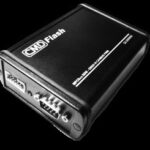An unexpected check engine light can be alarming, especially if you’re on the road. While it doesn’t always signal catastrophic failure, it indicates an issue within your vehicle’s powertrain (engine, transmission, or emissions system). This could range from a loose gas cap to a serious engine problem. Don’t ignore it, even if your Ram 1500 seems to be running smoothly.
Since the 1980s, vehicles have utilized onboard diagnostics (OBD) systems. These systems self-assess, diagnose, and store diagnostic trouble codes (DTCs) indicating potential problems. Accessing these codes, especially without an OBD2 scanner, is crucial to understanding the issue. This article will guide you through how to read codes on your Ram 1500 without an OBD2 scanner.
Understanding Check Engine Light Severity
Before diving into reading codes, understanding the urgency of the situation based on your check engine light’s appearance is crucial:
-
Solid Yellow/Orange: A consistently illuminated yellow or orange light signals a non-emergent issue. The system has detected a problem but can compensate. While you don’t need to pull over immediately, address it soon. Driving over 100 miles without diagnosis is not recommended.
-
Solid Red: A solid red light indicates a more pressing problem requiring quicker attention. While not catastrophic, it’s advisable to head to a mechanic for diagnostics and repair.
-
Flashing Red: A flashing red light signals a severe issue, often a misfiring engine. This can cause significant damage. Pull over immediately and contact roadside assistance.
Reading Codes Without a Scanner: Ram 1500 Specific Methods
While an OBD2 scanner is the easiest way to read codes, there are alternative methods for a Ram 1500. These methods might not work on all model years, so referring to your owner’s manual is recommended.
Method 1: Using the Odometer
Some Ram 1500 models allow code retrieval through the odometer:
- Turn the ignition to the “On” position (don’t start the engine).
- Press and hold the “Trip” and “Reset” buttons on the instrument cluster simultaneously.
- Cycle the ignition key three times from “On” to “Off,” ending in the “On” position.
- Observe the odometer display for any displayed codes. These might appear as a series of numbers or letters.
Method 2: Key Dance Method
This method involves cycling the ignition key:
- Ensure the ignition is off.
- Turn the key to the “On” position, then back to “Off” three times in rapid succession, ending in the “On” position.
- Watch the check engine light for flashes. Count the flashes and pauses. Long flashes typically represent tens, and short flashes represent ones. A pause separates the digits of the code. For example, two long flashes followed by a pause and then three short flashes indicate code 23.
Consulting a Professional
While these methods can provide some insight, they might not be as comprehensive as an OBD2 scan. Generic codes might not pinpoint the exact problem. Consulting a qualified mechanic is always the best course of action for accurate diagnosis and repair. They have the necessary tools and expertise to interpret codes correctly and recommend the appropriate solutions.
Protecting Your Ram 1500 from Costly Repairs
Ignoring a check engine light, even for seemingly minor issues, can lead to more serious problems and expensive repairs. An extended warranty can provide financial protection against unexpected mechanical breakdowns.
Consider protecting your Ram 1500 with an extended warranty to avoid costly repairs down the road. Regular maintenance and prompt attention to warning signs are crucial for keeping your truck running smoothly.
